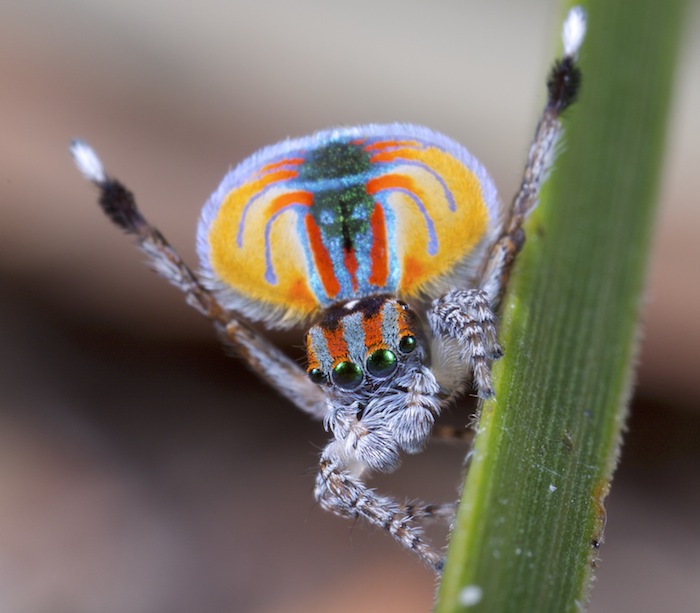Mimicry in Nature: How Jumping Spiders Imitate Wasps for Mating

In a remarkable display of evolutionary adaptation, the Maratus vespa, a species of jumping spider, has been observed mimicking wasps during courtship rituals. This peculiar behavior raises intriguing questions about survival strategies and sensory exploitation in the animal kingdom. The findings were detailed in a study conducted by researchers at the University of Cincinnati and published in the journal Behavioral Ecology.
The Maratus vespa, known for its vibrant colors and intricate mating dance, presents a unique case of mimicry, where the spider adopts characteristics of a predator—namely, a wasp. This mimicry is not merely for aesthetic purposes; it plays a critical role in the courtship process. According to Olivia Harris, a lead author of the study and a graduate student at the University of Cincinnati, the spider’s ability to imitate a wasp's appearance may serve as a tactical advantage in attracting female mates. "If the female perceives a wasp nearby, she becomes alert but still, creating a crucial opening for the male to initiate his courtship display," Harris explained.
To investigate this phenomenon, the researchers employed an innovative approach utilizing computer vision and machine learning. Neural networks were trained to classify images of various insect species, including the Maratus vespa. The results were telling; the AI misidentified the spider as a wasp more than 20% of the time, underscoring the strength of the spider's visual mimicry. This experiment not only revealed the spider’s deceptive capabilities but also highlighted a potential blind spot in predator recognition.
Professor Nathan Morehouse, a co-author of the study and an expert in behavioral ecology, elaborated on the implications of this mimicry. He noted that the illusion works best when viewed from a distance or from the side, angles which rely on the female’s peripheral vision. "This visual deception is not designed to trick the female permanently; rather, it is a strategy to capture her attention long enough for the male to make his presence known," Morehouse stated.
The courtship dance of the Maratus vespa involves raising its abdomen and displaying vivid patterns that resemble the warning colors of wasps. This tactic allows the male to exploit the female’s natural response to potential threats. However, it is also a risky maneuver; if the female spider perceives the male as a threat rather than a mate, the courtship could fail.
This unique example of visual mimicry among jumping spiders is not without precedent in the animal kingdom. Other species, such as certain male moths, have been observed to imitate predator sounds to prevent females from fleeing. However, the Maratus vespa is notably unique in visually mimicking a predator during such a vulnerable stage as mating. This behavior represents a rare form of sensory exploitation where the male spider utilizes a threat to enhance his mating prospects.
The researchers are now planning further studies to explore variations in mimicry among different individuals of the species. They aim to ascertain whether some male spiders are more adept at mimicking wasps than others and how these differences might influence female mate choice. Such research could provide deeper insights into the evolutionary advantages of mimicry and the complex dynamics of attraction in the animal world.
As the natural world continues to reveal its intricacies, the Maratus vespa stands out as a fascinating example of how deception can play a critical role in both survival and reproduction. While the spider's antics may seem peculiar, they reflect a broader narrative of adaptation and evolutionary strategy, ensuring that the dance of the Maratus vespa continues in the wilds of Australia.
Advertisement
Tags
Advertisement





